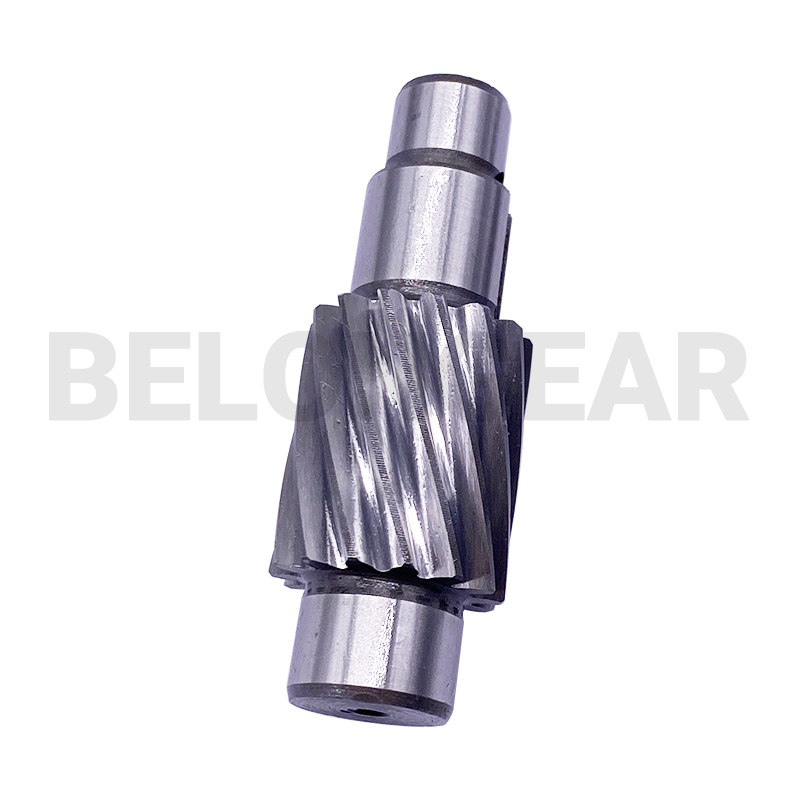Types of Helical Gears
Helical gears are widely used in mechanical applications due to their smooth operation and high efficiency. They come in several types, each designed for specific applications.
To manufacture helical gears, the reference section of the gear is positioned in the normal plane. By tilting the hobbing tool, standard spur gear hobbing machines can be adapted for this purpose. However, the helical tooth design complicates the production process, making it more challenging compared to the straightforward manufacturing of spur gears. This complexity requires precise machinery and expertise, ultimately impacting production efficiency and cost.
1.Single Helical Gears: These are the most common type, featuring teeth cut at an angle to the axis of the gear. They offer efficient power transmission and are ideal for applications where noise reduction is important.
2.Double Helical Gears: Also known as herringbone gears, these consist of two sets of teeth that are angled in opposite directions. This design eliminates axial thrust and allows for higher load capacities, making them suitable for heavy-duty applications.
3.Left Hand and Right Hand Helical Gears: Helical gears can be classified based on the direction of their spiral. Left-hand gears spiral counterclockwise, while right-hand gears spiral clockwise. This distinction is crucial when designing gear pairs.
4.Interlocking Helical Gears: These gears are designed to mesh seamlessly, providing smooth and quiet operation. They are often used in gearboxes and high-speed machinery.
The Wide Ranging Applications of Helical Gear Sets Transforming Industries
Breakthrough in Helical Gear Pinion Shaft Technology Enhances Helical Gearbox Performance
Tooth Forms of Helical Gears
Belon gears helical gears are characterized by their angled teeth, which provide efficient power transmission and reduced noise. The tooth forms of helical gears are crucial for their performance and include several key types:
Standard Helical Teeth: These are commonly used and feature a uniform tooth profile. They provide smooth engagement and high efficiency, making them ideal for general applications.
Modified Helical Teeth: This design includes alterations to the tooth profile to enhance performance, such as improved load distribution and increased strength. Modified teeth help reduce stress concentrations, extending gear life.
Profile Shifted Teeth: By shifting the tooth profile, these gears can improve contact patterns, leading to better load handling and reduced backlash. This adjustment enhances the overall performance of the gear system.
Involute Tooth Profile: Most helical gears utilize an involute tooth form, allowing for consistent meshing and smooth operation. This profile minimizes friction and wear, promoting longevity.
Post time: Sep-24-2024





